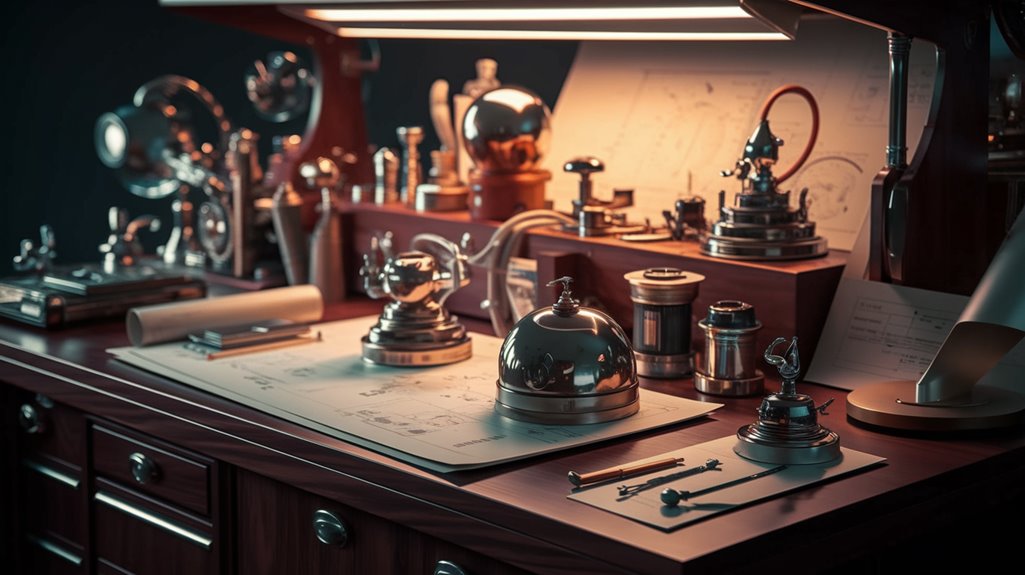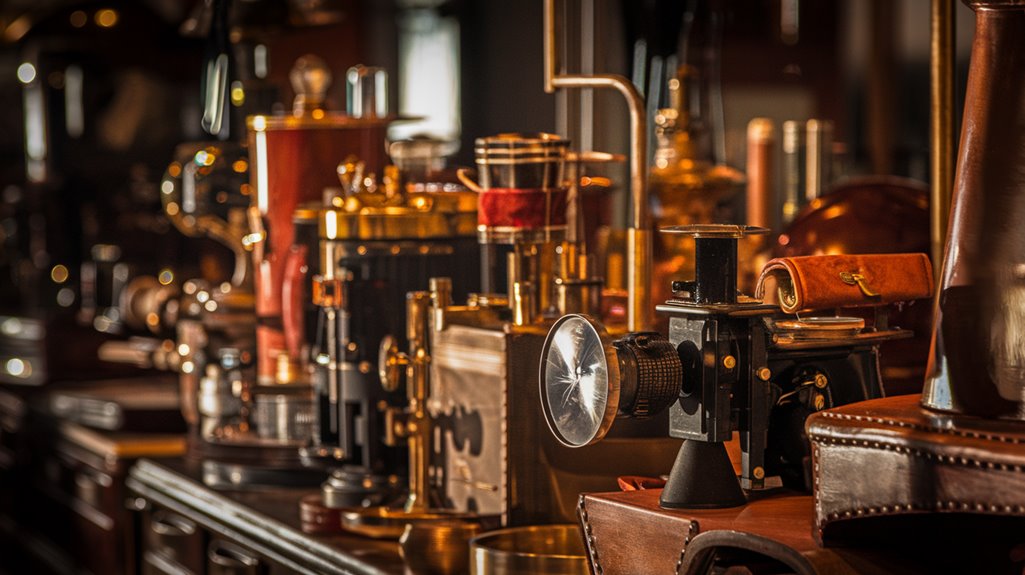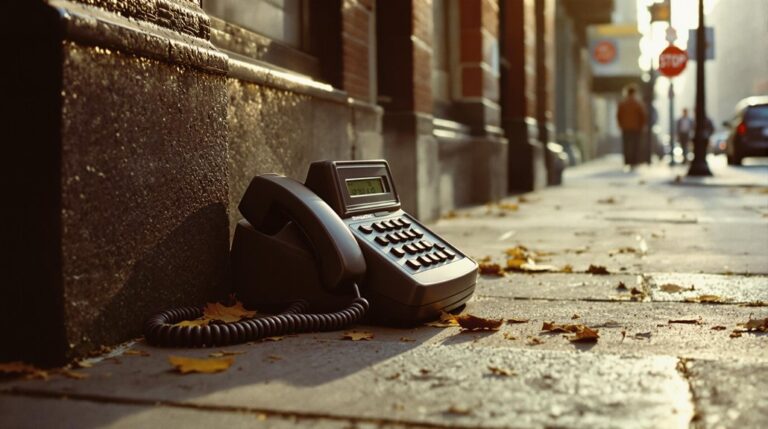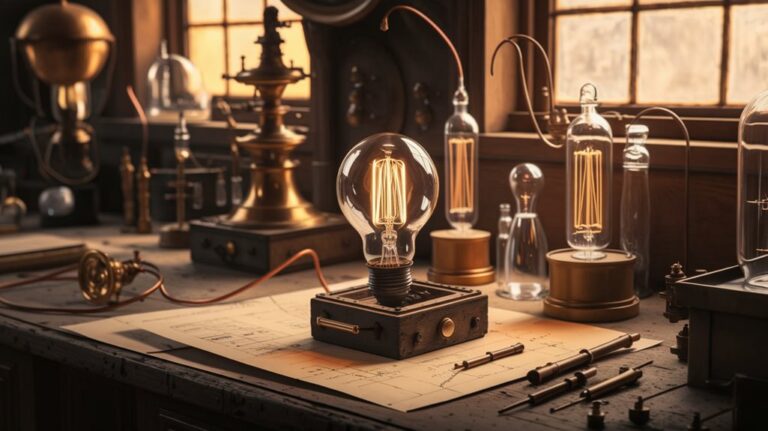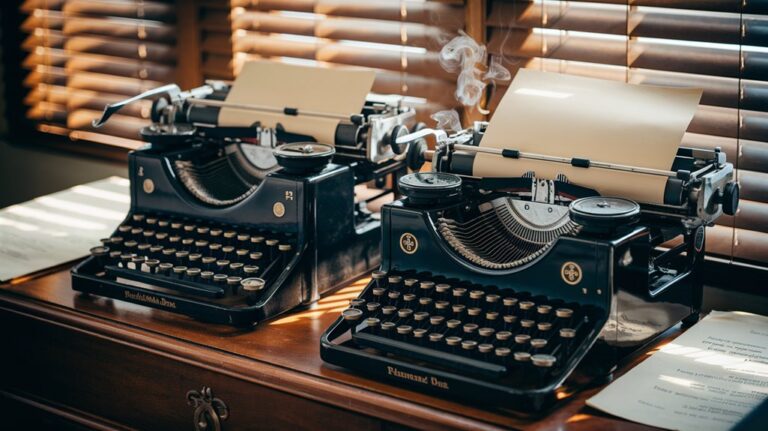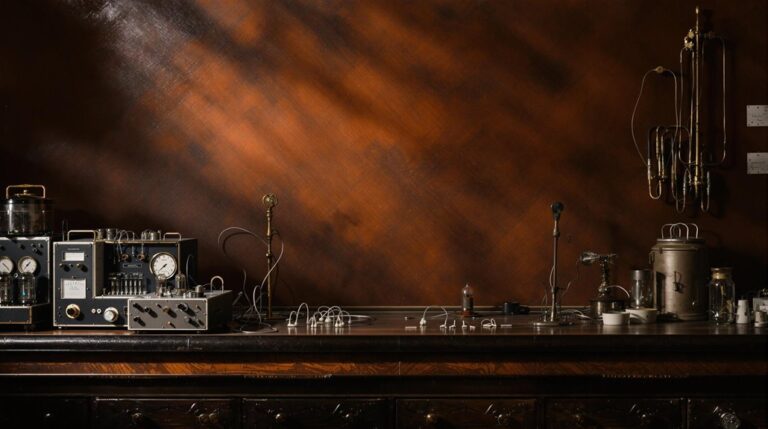The Real Q: The Genius Behind James Bond’s Wildest Tech
You might think James Bond's gadgets are pure Hollywood fantasy, but they're actually rooted in real wartime innovation. When you watch Q hand 007 an exploding pen or a laser watch, you're seeing echoes of actual WWII inventions from Britain's secretive Q Branch. Led by pioneers like Major H.Q.A. Reeves and Charles Fraser-Smith, these engineers transformed ordinary items into covert weapons and tools. Their legacy hasn't just shaped spy fiction—it's revolutionized modern intelligence operations.
From World War II Engineer to Hollywood Legend: The Real Q's Origins
Innovation during World War II laid the groundwork for one of cinema's most beloved characters: Q, James Bond's genius quartermaster.
You'll find Q's real-world origins in Britain's Station IX, where brilliant minds like Major H.Q.A Reeves created groundbreaking espionage innovations that would later inspire Ian Fleming's novels. The character's influence extended far beyond fiction, with Q Branch culture becoming established within actual intelligence departments.
Behind the fictional gadget master stood real-life heroes like Charles Fraser-Smith, who developed "Q-devices" for the Special Operations Executive, and firearms expert Geoffrey Boothroyd, who inspired the original Major Boothroyd character. Under the command of Lieutenant Colonel Dolphin, the facility drove countless technological breakthroughs from 1943 onwards.
Their inventions, from the silent Welrod pistol to the compact Welbike motorcycle, revolutionized covert operations.
The impact was so significant that MI6 later named their actual head of technology "Q," cementing these World War II pioneers' legacy in both fact and fiction.
Q Branch's Greatest Hits: Gadgets That Changed Cinema History
The cinematic impact of Q Branch's innovations has transformed action sequences forever.
Whether it's the seemingly ordinary items turned lethal – like the killer tea tray or the perfume flamethrower – or the more practical tools like digital binoculars with satellite uplinks, these inventions have become iconic symbols of spy cinema.
Perhaps most memorable are the quirky combinations, such as the bagpipe flamethrower and the gondola that transforms into a hovercraft, proving that Q Branch's creativity knows no bounds. The ingenuity peaked with jet propelled bullets under development, though they were never actually used in the field. Many of these gadgets were inspired by the real-life work of Christopher Clayton Hutton, who created innovative escape equipment for Allied forces during WWII.
When Fantasy Becomes Reality: Bond Tech in Today's World
While James Bond's gadgets once seemed like pure fantasy, many of Q Branch's fictional innovations have evolved into real-world technologies.
Today's biometric breakthroughs mirror Bond's high-tech world, from fingerprint-secured firearms to facial recognition systems in your smartphone. The Department of Homeland Security develops cell-all detection capabilities for crowded spaces.
The surveillance evolution continues to advance, though not quite reaching the nano-bot sophistication seen in Spectre. Like the stolen MI6 agent files in Skyfall, modern data security remains a critical concern in intelligence operations.
You'll find these Bond-inspired technologies making waves in modern security:
- Secure biometric authentication in everyday devices and weapons storage
- Advanced tracking systems through wearable tech and smart devices
- Encrypted communication protocols for covert operations
- Architectural mapping technology similar to Q-Dar
While we haven't achieved all of Bond's futuristic gear, research facilities like Hanslope Park keep pushing boundaries, turning yesterday's spy fiction into tomorrow's reality.
The Evolution of Q: From Quartermaster to Tech Mastermind
Since his first appearance in 1962's *Dr No*, Q has transformed from a simple armourer into MI6's brilliant tech mastermind.
You'll notice Q's evolution through four distinct portrayals, starting with Peter Burton's straightforward technician to Desmond Llewelyn's fatherly figure who'd scold 007 for his reckless gadget handling.
Q's character took its most significant turn with Ben Whishaw, who brings a modern, confident approach to the role. His style expertly combines geek chic trends with traditional Q elements. Like Ian Fleming's own experience as an Intelligence Officer, Q's character reflects deep knowledge of military operations and intelligence work.
Unlike his predecessors, Whishaw's Q stands up to Bond while maintaining the department's innovative spirit.
He's not just creating gadgets anymore; he's taking on cybercriminals and offering vital strategic support.
Through these changes, Q has grown from a background player into an essential ally who's willing to bend MI6 rules to help Bond save the day.
Beyond the Movies: Q's Impact on Modern Innovation
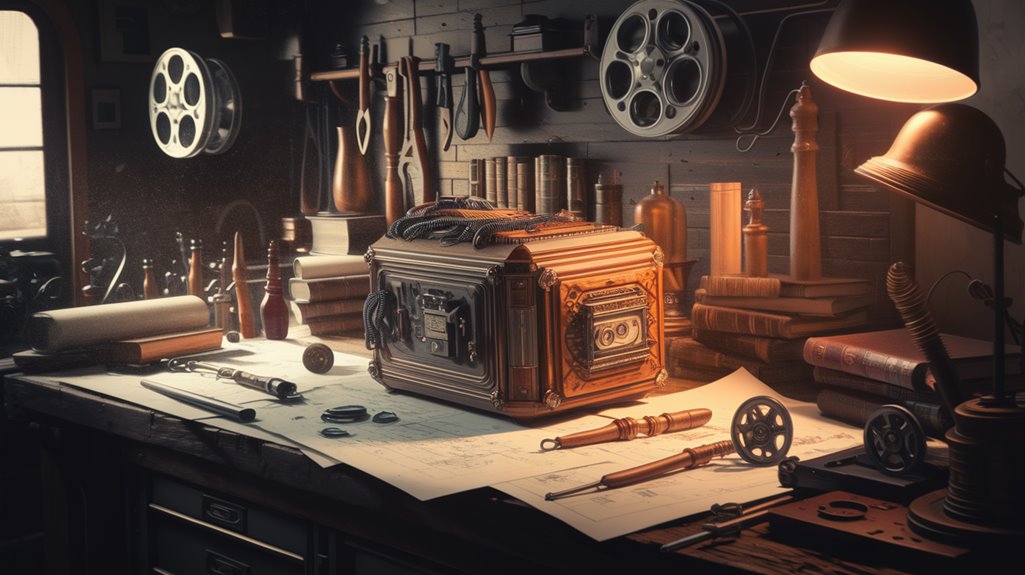
Far beyond Hollywood's imagination, Q's innovative approach to gadgetry has sparked real-world advancements in intelligence agencies worldwide. The genius quartermaster's legacy has influenced how modern organizations develop technologies for field agents, with both the CIA and Department of Homeland Security establishing Q-inspired divisions. Today's innovations leverage natural language processing to enhance agent communication systems and field operations.
Q's Legacy has shaped technological advancements in four key areas:
- Biometric security systems, including fingerprint scanners and palm-enabled weapons
- Non-lethal surveillance tools that prioritize information gathering over explosives
- Advanced materials research for specialized equipment development
- User-friendly cybersecurity solutions that emphasize simplicity
You'll find Q's influence most evident in how today's intelligence agencies approach innovation: focusing on practical, easy-to-use technologies rather than flashy gadgets. Modern smartphones now utilize biometric authentication features similar to those seen in Bond films. The CIA's Office of Technical Services even proudly calls itself "America's Q," demonstrating the lasting impact of this fictional character on real-world technological development.

